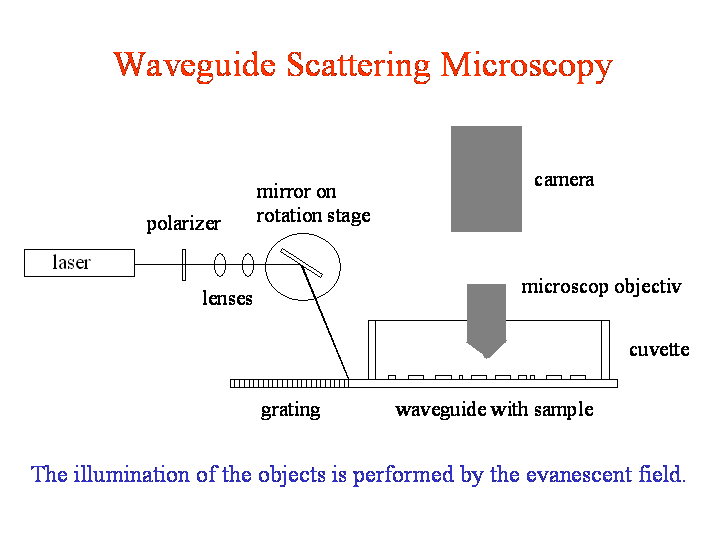

The evanescent light as the illuminating source of any microscopic object on
the surface of the waveguide can serve many purposes. It can be used for:
- scattering light microscopy, where a contast arises from low and high scattering
areas
- fluorescence microscopy, where the evanescent field excites chromophores
- absorption phenomena
The objects may vary from inorganic and organic particles or patterned surfaces
to biological objects like cells.
The wavelength of illumination can easily be chosen, as well as the intensity.
To some extend the depth profile can be adjusted by applying the right waveguide
mode. Another option is to define a destinct polarisation state by using either
TE or TM modes or a combination of both.
For the white light microscopy an adequate coupling mechanism has to be used.
The outcoupled intensity will be analysed by means of a spectrometer.